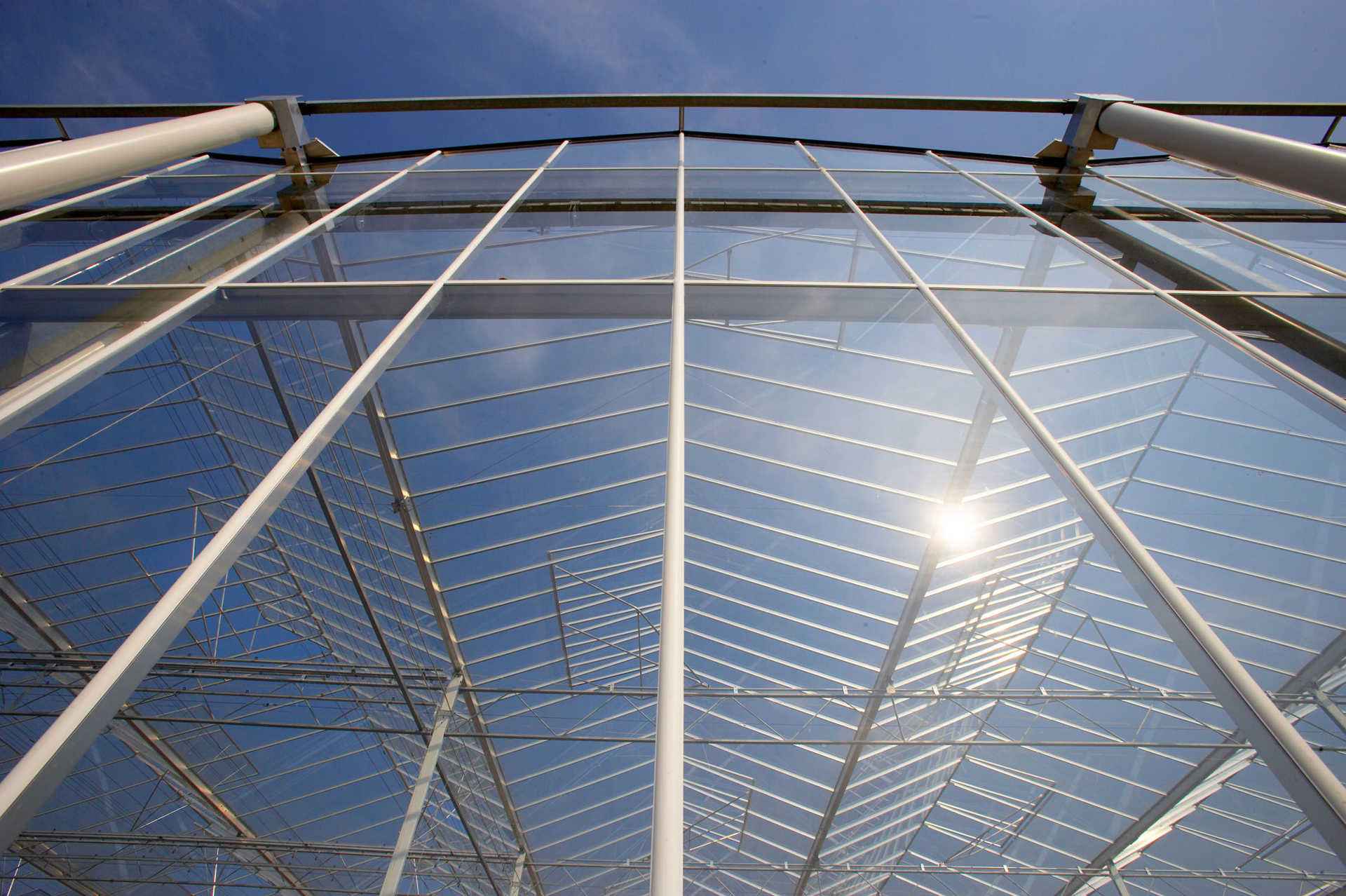Latent Heat

Short definition
Latent heat in greenhouse climate control is the energy involved in phase changes of water, primarily evaporation and condensation, which alters enthalpy without changing the dry-bulb air temperature.
Expanded definition
=Latent heat is the portion of air enthalpy attributable to water phase changes, so changes in humidity have a large impact on greenhouse energy budgets. In practice, evaporative cooling uses latent heat absorption to lower dry-bulb temperature while raising humidity, changing the enthalpy of the air and altering the efficiency of heating and ventilation strategies. Accurate monitoring of vapor pressure deficit, humidity ratio, and dew point is essential; sensors for RH, temperature, and sometimes wet-bulb enable real-time estimation of latent heat flux and drive control actions. Control systems translate measured humidity and temperature into humidification, dehumidification, and ventilation commands, coordinating fogging or misting cycles with fan speeds and radiator or radiant heating loads. Crop physiology and ET rates modulate latent loads, so stage-specific crop calendars and irrigation regimes must be incorporated into energy models; energy recovery devices or regulated irrigation regimes may tip the balance toward stable humidity control. Because latent heat scales with the latent heat of water and vapor pressure, weather conditions such as external humidity, wind speed, and solar gain greatly influence the optimum balance between cooling and dehumidification; all of these factors are captured in psychrometric charts and enthalpy-based calculations that guide automation decisions. Synonyms and abbreviations: latent heat of vaporization,heat of vaporization,latent heat of evaporation,latent energy,L (latent heat).
In Greenhouse Context
Latent heat dominates greenhouse energy budgets because water phase changes store and release energy without altering the air temperature, making humidity control a primary lever in climate management. In practice, evaporative cooling uses latent heat absorption to lower the dry-bulb temperature while raising humidity, changing the enthalpy of the air and altering the efficiency of heating and ventilation strategies. Accurate monitoring of vapor pressure deficit, humidity ratio, and dew point is essential; sensors for RH, temperature, and sometimes wet-bulb enable real-time estimation of latent heat flux and drive control actions. Control systems translate measured humidity and temperature into humidification, dehumidification, and ventilation commands, coordinating fogging or misting cycles with fan speeds and radiator or radiant heating loads. Crop physiology and ET rates modulate latent loads, so stage-specific crop calendars and irrigation regimes must be incorporated into energy models; energy recovery devices or regulated irrigation regimes may tip the balance toward stable humidity control. Because latent heat scales with the latent heat of water and vapor pressure, weather conditions such as external humidity, wind speed, and solar gain greatly influence the optimum balance between cooling and dehumidification; all of these factors are captured in psychrometric charts and enthalpy-based calculations that guide automation decisions. In practical terms, latent heat management requires thoughtful sensor placement and robust data integration; canopy-level measurements should be complemented by sampling near vents and glazing to capture boundary layer humidity. Dew point monitoring helps prevent condensation on leaves or glass, reducing disease risk and maintaining light transmission; control schemes may use indoor vs outdoor enthalpy differences to drive ventilation and heat-recovery strategies, while humidification is coordinated with irrigation to avoid over-saturation. When sizing climate control equipment, the latent load should be included with the sensible load to prevent undersized dehumidification or over-firing of heaters; in high humidity regions, latent-load removal can be the dominant energy sink, necessitating efficient misting, dehumidification, and ventilation integration. Finally, operators should routinely review LE, E, and humidity targets, adjusting setpoints to crop stage, outdoor weather, and energy prices to balance crop health, energy costs, and system reliability.
Examples and/or use cases
Examples: In a high-ET tomato greenhouse, fogging provides adiabatic cooling that lowers the dry-bulb temperature while absorbing latent heat, increasing humidity but reducing the need for fossil-fuel cooling; in a pepper house, mist cycles are tuned to outdoor humidity to maintain dew point margins and prevent leaf wetness while preserving cooling; evapotranspiration accounting using LE = L·E guides sizing of exhaust fans and dehumidifiers to match crop demand; psychrometric planning supports humidification in a lettuce house to hold RH within target ranges while avoiding condensation on glass; condensation management in a cool-season greenhouse is performed with intermittent cooling cycles to minimize latent heat release on surfaces and reduce dew risk; infiltration latent heat losses are evaluated in energy audits to justify weather sealing and energy recovery ventilation; in a greenhouse with CO2 enrichment, humidity control must balance photosynthetic demand with transpiration to maintain stomatal behavior and optimize growth.
Relevance
Latent heat is central to greenhouse science and practice because psychrometric properties determine crop conditions, setpoints, and energy use. Setpoints and control algorithms must reflect the plant's physiology, including transpiration rates, stomatal conductance, and leaf temperature targets, to optimize growth while minimizing energy costs. The trade-offs are clear: tighter humidity control reduces disease risk and improves product quality but can raise energy use if latent loads are not matched with ventilation and dehumidification capacity. Infiltration, ventilation, and moisture transport are critical components of energy balances, and latent heat often dominates the cooling load, especially during peak ET or humid outdoor conditions. Robust practice relies on accurate sensors, validated models, and scenario analysis to plan humidification, dehumidification, and heating schedules that align with crop stages, climate, and energy prices. Sources — Books: Latent Heat in Greenhouse Climates — GreenhouseCultivationExpert; Enthalpy-Based Climate Control — GreenhouseCultivationExpert; Humidity Management in Greenhouse Systems — GreenhouseCultivationExpert. Sources — Online: https://extension.psu.edu/psychrometric-chart-use/; https://pdhonline.com/courses/m135/m135content.pdf; https://msu-prod.dotcmscloud.com/floriculture/uploads/files/Section%20_3.pdf; https://ceac.arizona.edu/sites/default/files/asae_-_heating_ventilating_and_cooling_greenhouses.pdf.